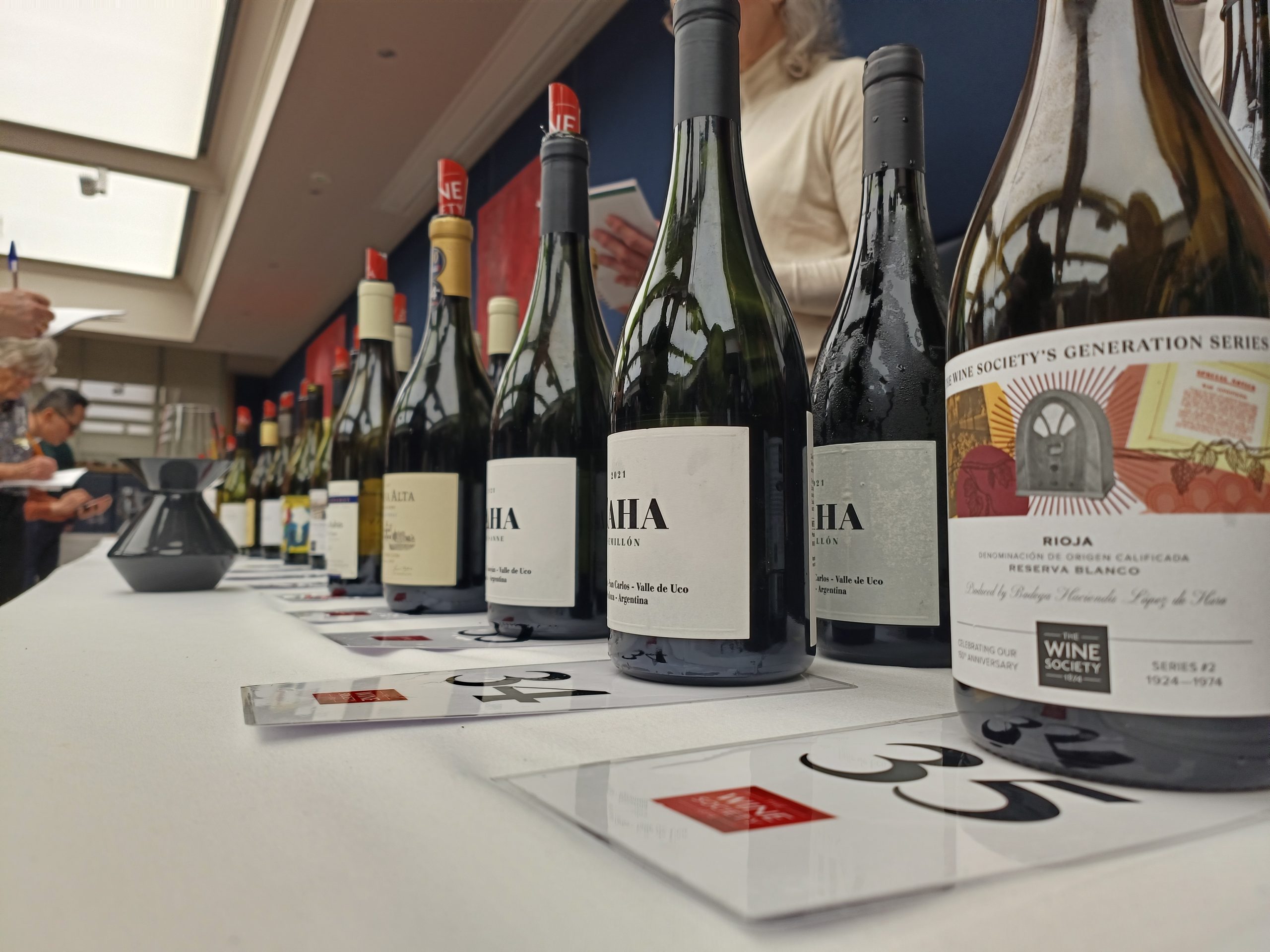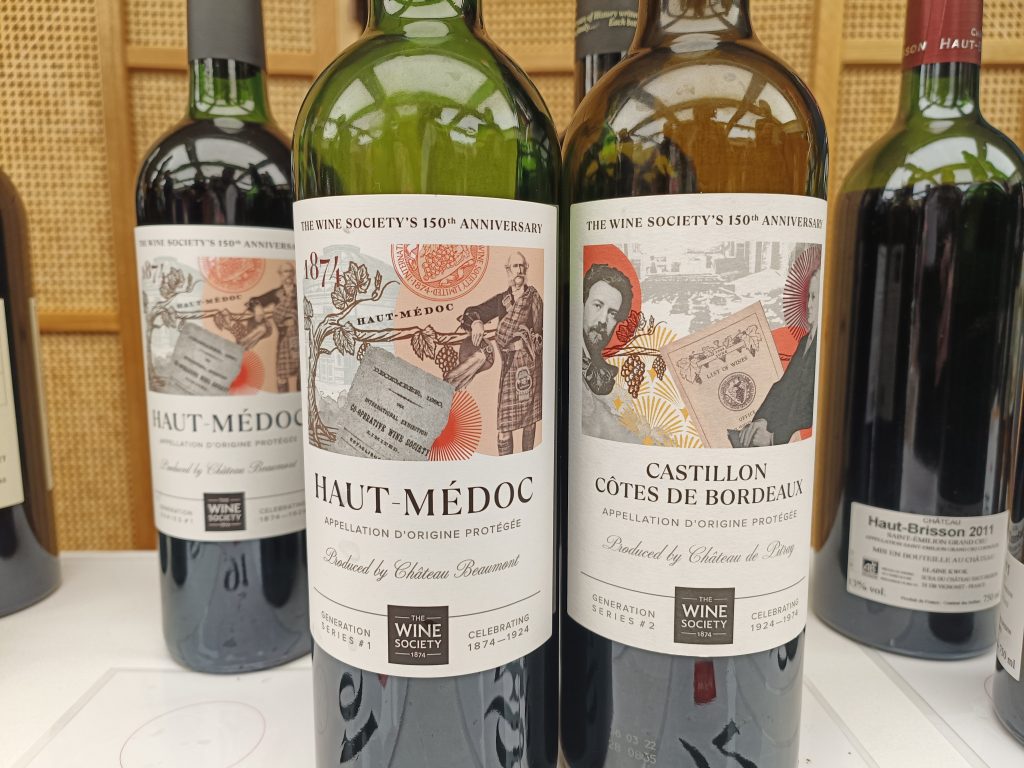Wine Society hails ‘remarkable’ year but prices to rise soon
The Wine Society has reported a “remarkable” year since it decided to hold prices for consumers in the face of cost inflation, but warned that it can only hold prices at the current rate until the summer.

Speaking to the drinks business at last week’s tasting chief executive Steve Finlan said that although “it took a while” for members to “get” what the team were doing when they decided to hold their prices, by Christmas there had been an a “noticeable” increase in volumes, which had carried through into this year, aided by a “boost” from the 150th anniversary releases.
“We closed out February at 9% and 19% in March, and our demand is 30% up on last year,” he said. “So our members are buying into the proposition.”
He said while it was quite hard to say if the reaction was in line with or exceeding the expectation, there had been a large boost to customer satisfaction, which had “shot up” after 12 years of showing stability. He also noted that there had been an increase in its membership overall.
Finlan added that having spent the last few years investing in the Wine Society’s infrastructure, from the website to IT to new warehousing, it now only has one major project being worked on (to replace its operating system) meaning that at this stage, any money generated by society doesn’t need to go into capex or infrastructure, but “can go into the wine and maintaining price”, which has been “at the top of the list.”
However, he warned that it would be impossible to hold prices indefinitely.
“We will have to put prices up at some point as we have swallowed inflation of about 10% inflation,” he told db – and even though that rate was coming down now, the inflation rate per se didn’t impact wine inflation, which remained at around 16%.
“It’s a lot to swallow, but what it means is that as cost prices go up, some lines just become unsustainable.” he said. “We were always planning to have minimum margin, but come the summer, we will put some wines up in price.”
However, as Pierre Mansour pointed out, this would potentially affect only around 200 lines out of the 1,600-strong range (which rises to around 4,000, across the year) – and the gap between prices the Wine Society is offering and what the wider market offers, “has grown”.
“It feels like we have some real momentum, which alongside our 150 year anniversary,” he said.
New releases

Partner Content
It comes as the organisation celebrates its 150th anniversary, with a timetable of events and two new wine ranges. In January it launched a limited-edition “never to be repeated” fine wine collection for its 150th anniversary, which includes classic vintages from some of the most famous estates that are ready to drink now, a feat took more than a decade of “planning, fine-tuning, shipping, and cellaring” to accomplish.
Finlan confirmed that the Wine Society has sold out of four lines of its 150th anniversary range (mostly wines in magnum) since the start of the year, although he said it had “plenty of stock left” of the 29-strong range.
“The initial boost was incredible and they’ve been reviewing well,” Mansour added.
The project was planned more than ten years ago, but Finlan said the cooperative would undertake a similar project again, pointing out that at any given time, it has around £22million of stock being cellared in order to release at peak maturity. For example, it is also continuing to experiment and is planning to launch an Austrian en primeur option this year.
The society has also released last week the second tranche of its Generation Series, a special collection that evokes each 50-year period in the Wine Society’s history. The first tranche, also released in January, showcased wines that were popular with members between 1874-1924, while the second tranche, out now, highlights wine sold by the society between 1924-74.
“They were wines and wine styles we were selling at the time so some of them may not have been trends at the time, but actually have come full swing and become trends now,” Mansour explained. He highlights for example a dry Furmint, which was sold by the Society at a time when the majority of Tokaji was sweet, and a white Rioja in a style that is coming back into fashion.
“That period was a heyday for that classic, oak-aged, oxidative style of white, which went quickly out of fashion about 20 or 30 years ago, but it’s now coming back into fashion. So our white Rioja is made in exactly that sort of traditional style,” he said.
The third Generation Series, which will be released in the summer, will highlight wines from 1974 to the present day, while the fourth tranche will be “an exciting nod to the future of wine”.
The latest Spring releases also include some more experimental wines, such as a blanc de noir Merlot from Bordeaux, Black & White Blanc de Noirs IGP Atlantique 2023, priced at £7.95, an experimental wine that producers hope may help address the challenges facing the bulk wine market, which has seen prices “hit the floor”. It has been made by an association of ten cooperative in the Entre-Deux-Mers and Duras regions (although it can only be labelled as ‘product of France’), a style of wine that could “become a lifeline for embattled producers across Bordeaux and its neighbouring appellations”, Tim Sykes said in the society’s tasting booklet.
Another notable wine Mansour pointed out is a Bordeaux white made from the new hybrid variety.
Related news
Are we about to see more British booze in South Korea?
WSET's Simon McMurtrie: 'I hope to be an enthusiastic cheerleader'




